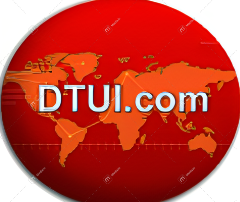Reducing Microinequities in the Workplace Online Course v. 2
This course aims to teach you how to create better, more productive relationships at work. By the end, you'll learn how to spot subtle unfairness, understand the REAR steps for addressing these issues, and be able to identify each step in scenarios.

DTUI.com
Course Overview
About the Reducing Microinequities in the Workplace Course:
What do you do? Do you look down and keep to yourself? Or, do you stand up and defend your foreign-language-speaking co-workers?
How you answer the questions determines whether or not you can recognize a microinequity—that is, subtle ways people treat each other unfairly and as though they do not belong. In this training, you’ll learn more about microinequities—including reducing them.
What Are Microinequities?
Introduction
Microinequities are small, subtle, and often unconscious behaviors that marginalize, belittle, or undermine individuals, particularly those from underrepresented or marginalized groups.
Course Summary
Key Take Aways
- Microinequities are harmful even though unintentional.
- No one escapes the harm. The victim certainly doesn’t. Any bystanders are also affected. The offender is negatively affected even if they are not conscious of it.
- Understanding how to recognize microinequities, comforting the victim, and using techniques such as R.E.A.R., can support the reduction of harm and the occurrence of the behaviors in the future.
- Sponsor others and advocate for their success.
- Be someone’s public champion.
- Be an upstander who pushes back against offensive behavior.
- Amplify a person’s voice when they’re silenced.
- Be a confidant to those who have a story to share.
Listen to others. One of the most important aspects of being an ally is to listen to as many voices as you can. Hearing from just one person and how they experience oppression isn’t enough. While you may find common themes, everyone’s experiences and opinions are unique. And so, the more you listen, the more you’ll understand—and the more you can help.
The opportunities to be an ally are wide-reaching—all you have to do is take action. Thank you for completing this course!
Technical Needs
- Computer with high-speed internet access
- Access to the online meeting platform (Please try this at least two days before the first lecture/discussion session to manage any technical difficulties beforehand).
- Telephone access (preferably with earphones)
- MS Word (Do not submit files in pdf, please)
Kopenhavn
This course provides participants with a framework for transforming an organization into an engaged, productive, and inclusive workforce
Why students love this course
Still Have Any Questions?
Check out the FAQs.
The DELA difference is that our training is designed to develop professional awareness, attitude (inclusive values and beliefs), knowledge, and skills. A comprehensive examination only assesses your knowledge. Each DELA program is designed to develop professional skills rather than cover only the knowledge you need to pass a final exam. Our certification recipients boast about having designed and developed a strategic plan, a diversity training, or a diversity recruitment plan upon completing their program. In that way, the knowledge you is put into practice. Instructors provide the feedback needed to complete the projects successfully. One graduate boasts that she developed a cultural diversity strategic plan by the end of the CDP training, for example. Her organization adopted the plan because she included staff during the design and development phases. A police officer developed cultural diversity training for officers in her department. The product you develop can be put into your professional portfolio along with the credentials that you earn..
>The CDE is designed and developed for individuals serving in cultural diversity leadership roles within an organization. The individual typically reports directly to the head of the organization, such as the CEO or president. The graduate’s range of potential influence within the organization is considerable compared to a diversity manager or someone with diversity and inclusion (D&I) expertise reporting to a middle manager, such as the human resource manager.
Yes, the distance learning format was the first format we offered the programs back in 1998. Now we use a state of the art learning platform called Canvas Instructure. You can begin the first course in each online program as soon as you register. There is also a weekly – strictly voluntarily – live one-hour video conferencing session for the course. It either meets either on a Tuesday or Thursday. You do not have to attend. It there when you want to attend. You can ask questions, meet other participants, and get an overview of the current module being covered in the course.
That is an excellent question. As of August 1, 2020, federal and state guidance on how to reopen live classroom training sessions is insufficient to even guess at start dates. The pandemic has not been arrested and that is likely the best turn of events that will offer that insight. Please check back as often as necessary or sign up to receive our newsletter at the bottom of this page.
In the meantime, online courses have, understandably, become very possible. In addition, we are currently considering a more intensive live, online experience (e.g., fours hour per day over two days for each course). If that is something you are interested in learning more about, please contact us.
Diversity Certification refers to the credentialing of professionals to serve in management or executive level diversity and inclusion leadership roles.












